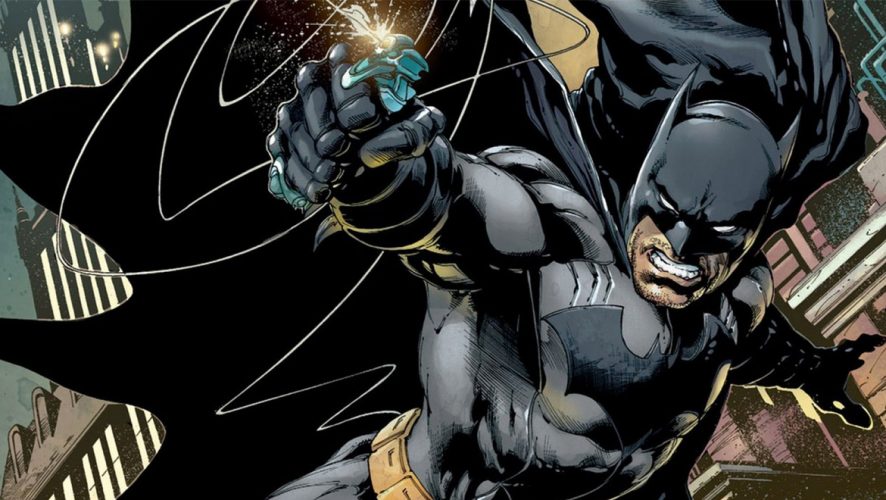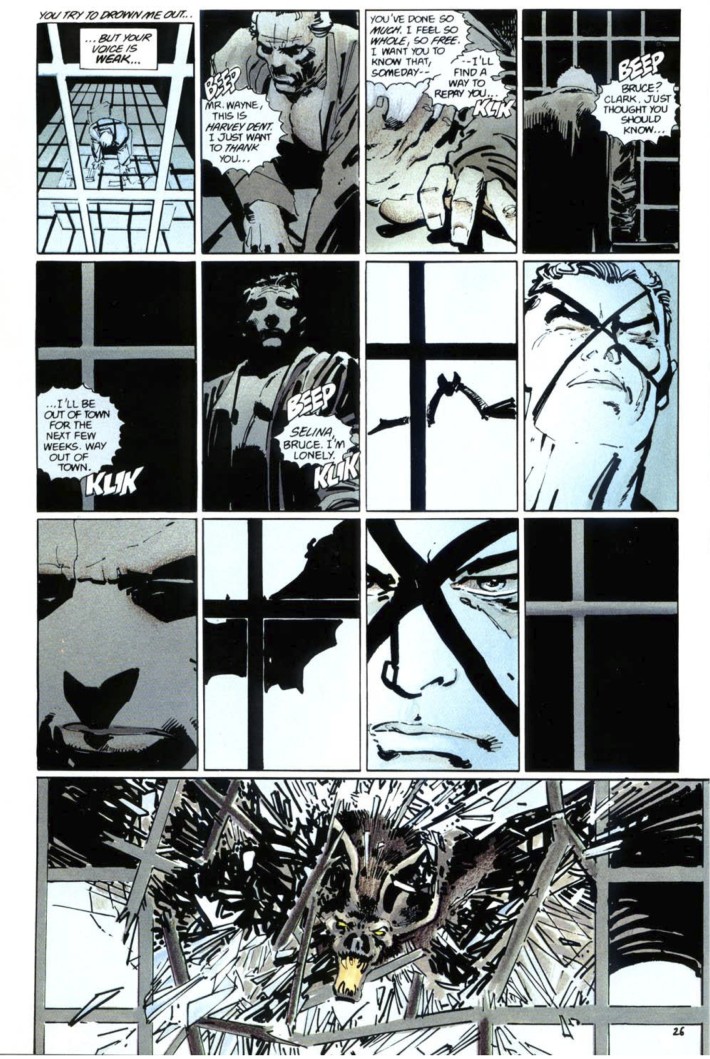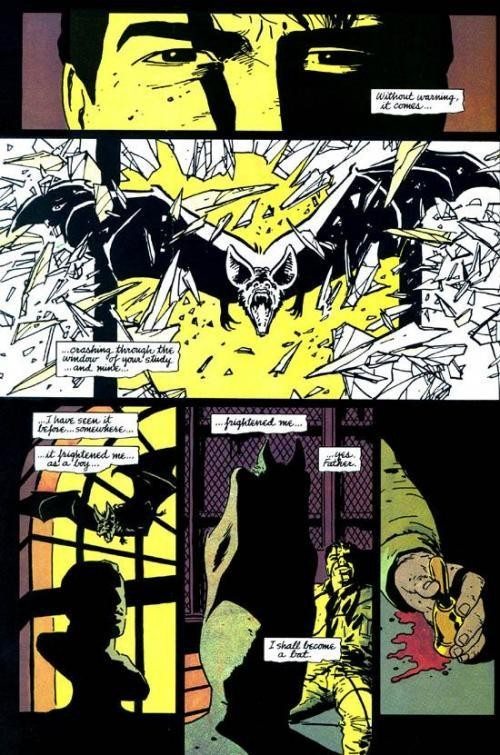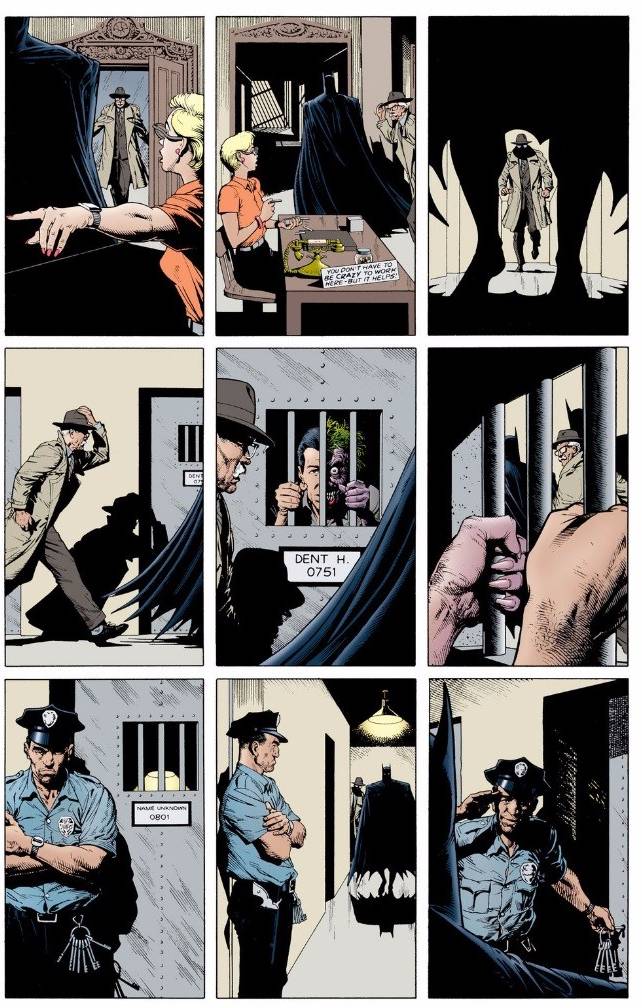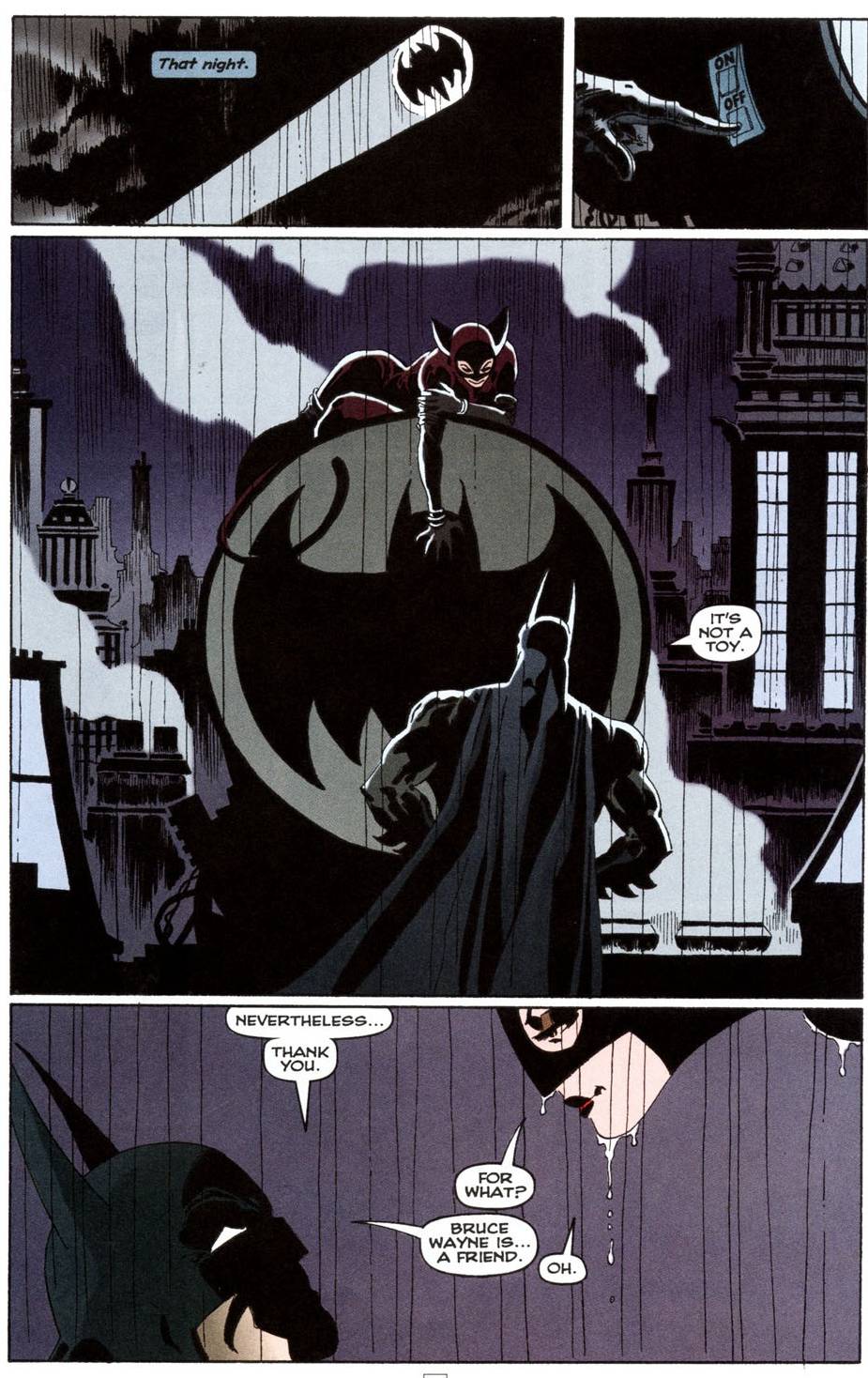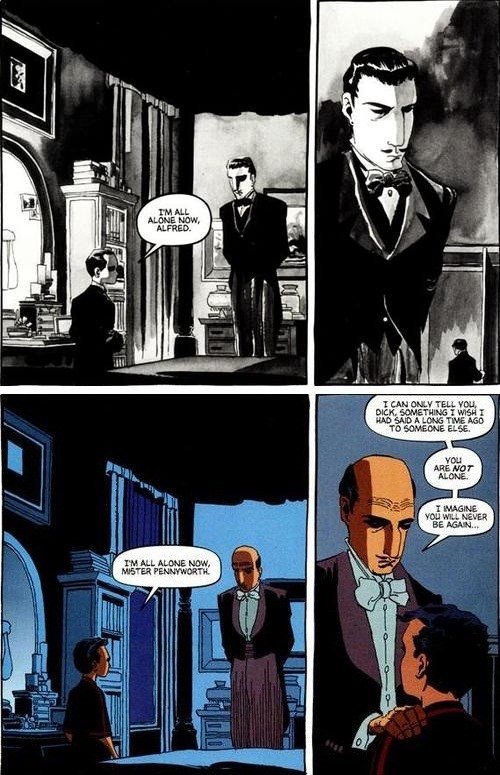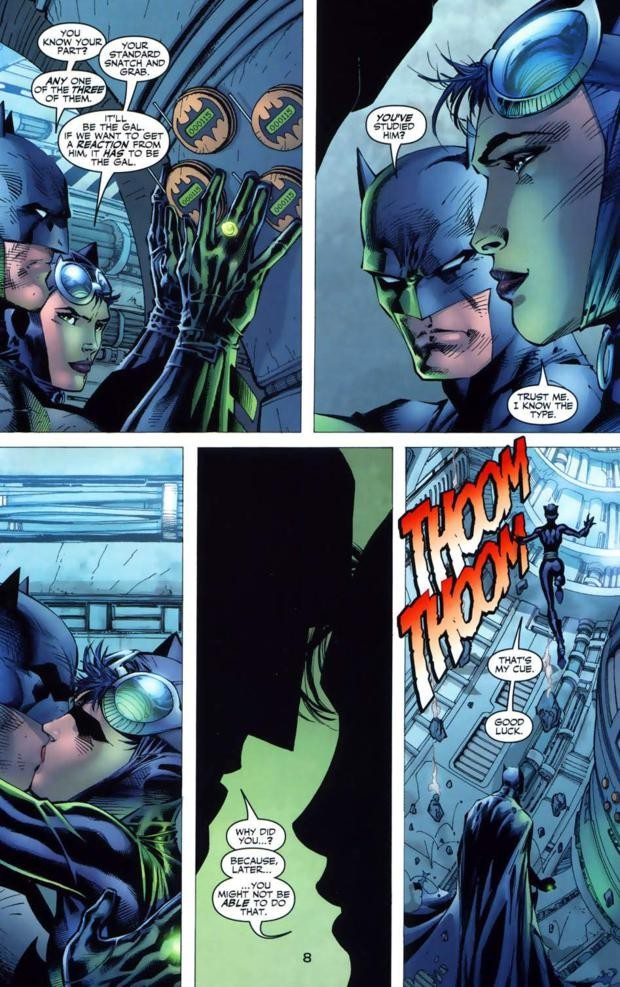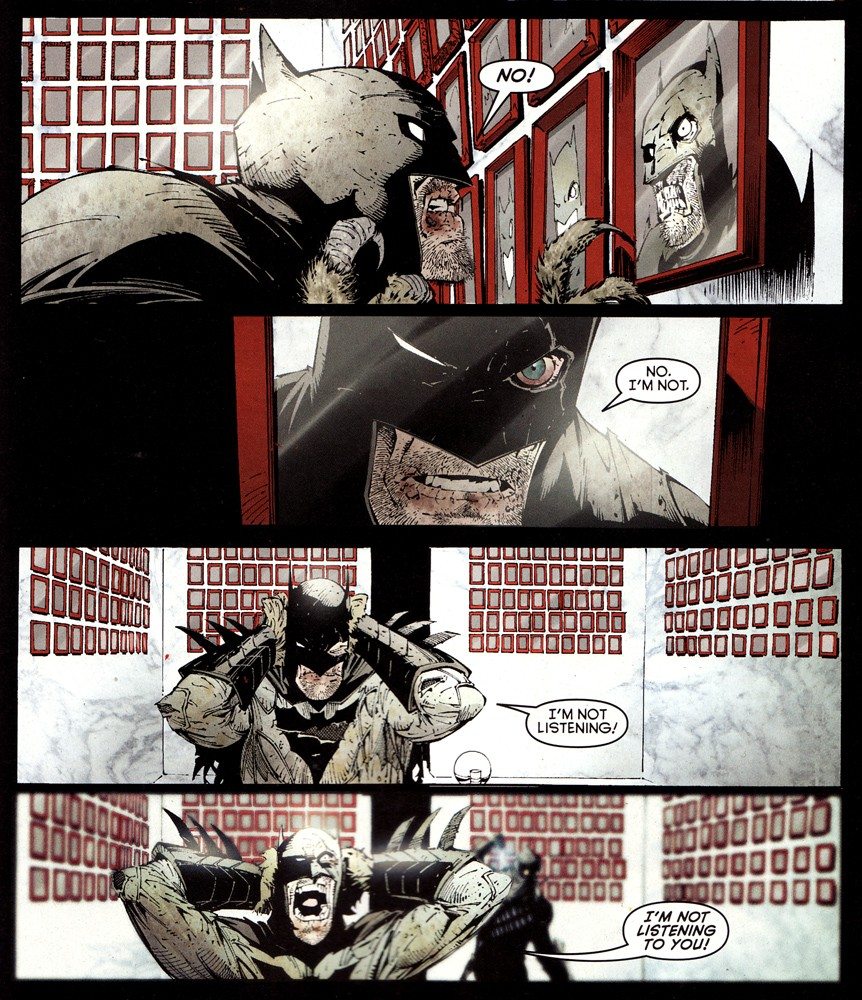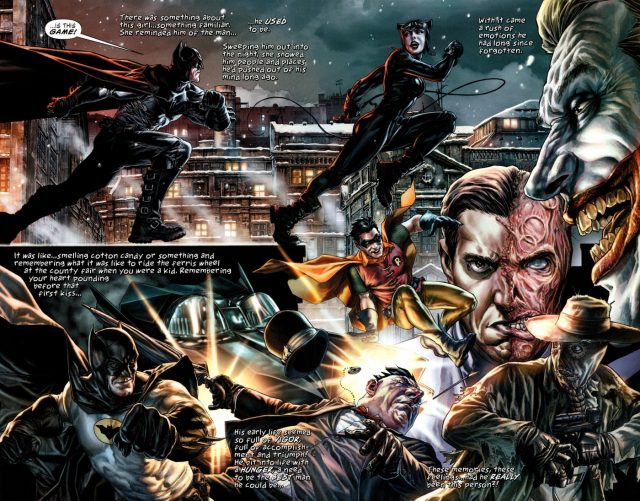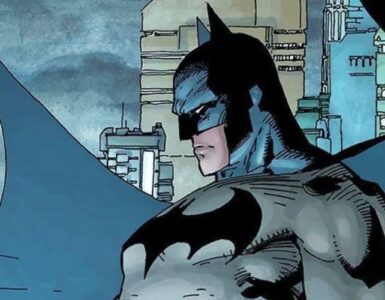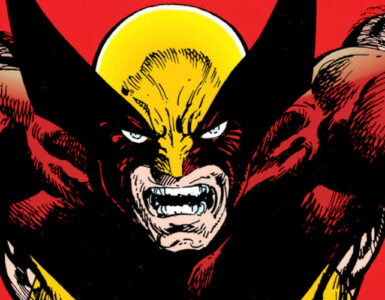The Dark Knight. The Caped Crusader. The Dark Detective. Whatever name you may like to refer Batman by, (or just “Bats” like I love to do), we are pretty sure Bat-fans have read some Batman graphic novels cover to cover continuously for six straight weeks like we are preparing for a Batman finals exam. Okay, maybe not that obsessive (who has two thumbs and rewatched the Batman parts from “Batman v. Superman” for uncountable times? THIS GUY).
Anyways, here is a list of top 10 Batman books any Bat-fan may definitely have read more than once… or twice, or thrice, or… you get the idea.
#1. The Dark Knight Returns – Written by Frank Miller, Artwork by Frank Miller and Klaus Janson
The seminal classic, released in February 1986, featured a 55-year-old Bruce Wayne who walked around the Batcave totally naked. Okay, not really, only for a few pages. Anyways, our 55-year-old Bruce has retired as Batman and has not donned the cape and cowl for 10 years now, only to find himself forced out of retirement to don the cape and cowl again to confront the Mutant Leader and his minions of weird-speaking fellows, Two-Face, a final battle with the Joker and a Battle Royale with the Man of Steel himself (with the help of the most underrated and intrepid Robin ever, Carrie Kelly!)
Why is this number 1 on this list? Well, did you not see what I wrote earlier that it is a seminal classic and you should just take my word for it? Kidding aside, The Dark Knight Returns is a vitally important Batman book to be published in the last 30 years because, in my humble opinion, Mr Miller wanted to use Batman to tell a story about the state of America back in 1986. His underlying political message for the book was painting an apocalyptic take on how then-President Ronald Reagan’s “Morning in America” persona was, in fact, a front used to not solve lingering systemic problems in the American society.
But the book is also vitally important because Mr. Miller has managed to capture the dread and war-weariness of an older Batman who has seemingly lost all ability to continue due to a “death in the family” and isolated himself from everybody else (save Alfred and Commissioner Gordon) for a decade before he had to re-confront the night of his nightmarish birth as the Dark Knight again. And adding on to that narrative, the book gave us a serious depiction of how a fight between Batman and Superman would entail, both physically and philosophically: Batman as the no-nonsense, brutal, dark vigilante versus Superman as the ultimate patriotic boy scout with the American flag wrapped around him.
The Dark Knight Returns was the high-water mark of pushing Batman back towards the dark vigilante characterization we all now know, starting from the foundations being laid earlier by Dennis O’Neil and Neal Adams when they took over the main “Batman” title in 1971, determined to wash away the bombastic and light-hearted take of the 1966 Batman TV show and the ridiculous rainbow Batmen of the 1950s comics thanks to the Comics Code Authority.
Not only that, but the book has clearly influenced director Christopher Nolan in also using an out-of-retirement Batman in “The Dark Knight Rises” and most recently, influenced director Zack Snyder’s very much maligned “Batman v. Superman: Dawn of Justice” in which we also see a much older and war-weary Batman in Mr. Ben “Batfleck” Affleck, down to the Armored Batman fighting Superman in the film’s first climactic fight.
Seminal classic indeed.
Best Quote: “This should be agony. I should be a mass of aching muscle – broken, spent, unable to move. And, were I an older man, I surely would…but I’m a man of thirty, of twenty again. The rain on my chest is a baptism. I’m born again…” – Batman
#2. Batman: Year One – Written by Frank Miller, Artwork by Frank Miller and Dave Mazzucchelli

Another seminal classic (published one year after The Dark Knight Returns) that debuted in Batman #404 to #407 in 1987, gave us a wet-behind-the-ears Bruce Wayne still trying to find his place in seedy Gotham City and Captain James “Jim” Gordon waging a one-man war on corruption within the Gotham City Police Department (GCPD). This book is actually really more about Gordon than about Batman, and readers can identify more with Gordon’s double-edged sword of righteousness as a police captain and his recklessness in having an affair with one Sarah Essen behind the back of his very pregnant wife.
The narrative style in the book is standard Frank Miller with our two main characters, Batman and Gordon, having the bulk of the narration to readers. Once again, Mr. Miller does what he does best in using Batman and Gordon to tell a story about the contrasts in lawful corruption within law enforcement and righteousness in unlawful vigilantism.
We also get to see a very different and very honourable Selina Kyle, who essentially lives in the belly of the seedy Gotham beast, and her being inspired by Batman thus leading to her transformation into Catwoman (also a very different Cat-suit than the one we are familiar with now).
My personal favourite part of the book is a badly injured Bruce Wayne essentially becoming Batman in front of the readers’ eyes, with this quote immortalised into Bat-lore: “I shall become a bat.”
The sequence of Bruce becoming Batman in Year One is important because it is deeply reminiscent of 55-year-old Bruce becoming Batman again in The Dark Knight Returns. It’s Frank Miller after all.
Year One is yet another seminal Batman classic because it is the continuation of shifting Batman closer to the “dark and gritty” incarnation we are all familiar with now. Year One has also influenced director Christopher Nolan’s “Batman Begins” in its depiction of Jim Gordon as a younger, honest and honourable cop in Gotham City while the book’s “Batman summoning bats to save him” moment was also clearly adapted into the film as well. And let’s not forget the endings of both Year One and “Batman Begins” involves Gordon mentioning a certain “Joker.”
It must also be noted that when The Dark Knight Returns and Year One debuted in 1986 and 1987, Alan Moore’s Watchmen was also released. This period of Batman history coincided with a period of comic book history where both of Frank Miller’s Batman books and Alan Moore’s Watchmen proved to change the comic book landscape forever, where comic books are no longer about colourful spandexed characters fighting colourful villains, but about how those same spandexed characters have to walk the fine line of equivocal morality in the backdrop of social & political commentary.
Speaking of Alan Moore…
Best Quote: “Without warning, it comes. Crashing through the window of your study…and mine. I have seen it before…somewhere. It frightened me as a boy, frightened me…yes, father, I shall become a bat.” – Bruce Wayne
#3. Batman: The Killing Joke – Written by Alan Moore, Artwork by Brian Bolland
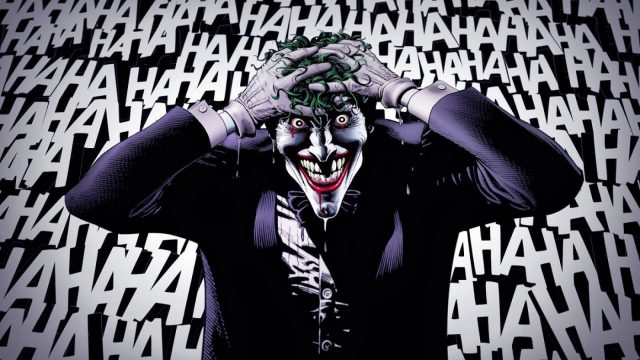
Whenever people start talking about this book, you will definitely hear one word that is ever-present and always accompanying: controversial. The Killing Joke will always be the book that crippled Barbara Gordon. No matter how much DC Comics may want to retcon or rework the story so much so that Barbara managed to get back on her feet again to be Batgirl (in the recent “Rebirth” canon), one can never forget the dialogue-less series of panels that depict the Joker shooting her and thereby paralyzing her for life; and one can also never forget the unbelievable amount of trauma the Joker put a butt-naked Jim Gordon through by showing him a series of big photographs of a naked Barbara lying in pain (Joker presumably took pictures of Barbara after shooting her) while Gordon is chained to an amusement park ride.
To fully appreciate the book, one must peel away the controversial aspects of the story to get the gist of the idea that “All it takes is one bad day to reduce the sanest man alive to lunacy.” Legendary comic book artist Tim Sale wrote in his introduction to the graphic novel that the story for The Killing Joke was born when Alan Moore and Brian Bolland was developing a “Batman/Judge Dredd” project and the project fell through.
What conspired next is probably still the best-written origin story for the Clown Prince of Crime. In fact, what we got in the book was a believable origin story at first until when he uttered near the end of the book that “Sometimes I remember it one way, sometimes another…If I’m going to have a past, I prefer it to be multiple choice,” that you questioned if the origin story you read earlier was believable anymore.
And of course, as much as this was a story about the Joker, it was as much a story about Batman as well. Batman’s no-killing moral code, which he would never break himself, was being put to the test in the book as he warned Joker that he did not wish for the worst to befall both of them and even offered him a lifeline to rehabilitate. It would seem those acts of reaching out to Joker was a way for Batman to do everything “by the book” before he might even want to break that moral code specially just for the Joker.
The ambiguous ending ultimately said as much as what Mr. Moore wanted to say, which was pretty much open-ended. Till this day questions abound as to whether Batman crossed the moral line he drew himself as seen in the final panels of the book.
The Batman and the Joker. Theirs is an eternal fight that will go on forever and ever and ever…
Best Quote: WAY TOO MANY!
#4. Batman: The Long Halloween – Written by Jeph Loeb, Artwork by Tim Sale

Supposedly taking place shortly after the events in Frank Miller’s Year One, this book sought to establish itself firmly into Bat-lore and boy, establish itself it did. Everything you ever craved for in a Batman crime story is fulfilled in The Long Halloween. Expanding on some of the characters introduced in Year One like Carmine “The Roman” Falcone and continuing the adventures of one “Captain” Jim Gordon and then-District Attorney Harvey Dent, this 13-issue long crime story is not just a Batman tale, but it features an all-star ensemble cast of villains (Joker, Catwoman, Riddler, Calendar Man, Penguin, Solomon Grundy, Scarecrow, Poison Ivy) that encompass the simple tale of our trinity in this story: Batman, Gordon and Dent.
Before you saw the three of them coming together to fight their war on crime in Christopher Nolan’s “The Dark Knight”, Batman, Gordon and Dent were already doing it in this book. If Year One focused squarely on a lonely Jim Gordon waging his war on crime & corruption in the GCPD, then The Long Halloween’s main character is definitely a heroic but ultimately tragic Harvey Dent who thrives on fighting for justice and fighting his dark side as well.
In my humble opinion, the winning formula of this book was how each chapter is named after and took place on a holiday. The smooth syncing of the holiday and the theme of the chapter perfectly encapsulates what the title of the book really means, the trials and tribulations Batman had to go through in every twist and turn, and of course, Harvey’s personal fight with injustice and his demons. If you grow sick of the superheroics and the super-villainy in the book, you are treated to a very Godfather-esque power play between the Falcone, the Maroni and the Viti crime families.
Underneath the unravelling of the alliance formed between Batman, Gordon and Dent, the dirty fight for power among the crime families is as raw, violent and natural like any good mobster stories can do. And as if you thought all the pieces of the puzzle are finally recovered and solved, the final twist in the story will definitely leave you flipping back several pages to see how the twist fits into the entire story.
The Long Halloween is truly phenomenal storytelling at its best coupled with one of the most uniquely beautiful artwork you will lay eyes on in a comic book.
Best Quote:
“I believe in Jim Gordon. I believe in Harvey Dent. I believe in Gotham City…” – Batman
#5. Batman: Dark Victory – Written by Jeph Loeb, Artwork by Tim Sale
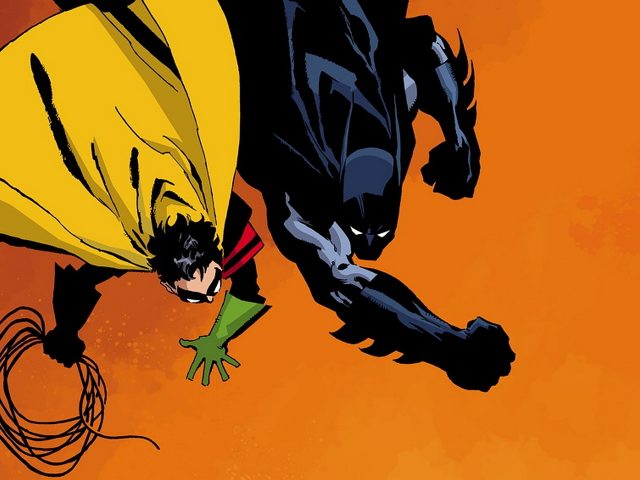
If you cannot get enough of The Long Halloween, then fret not, because Dark Victory is the direct sequel to the first book and it is yet another collaboration between writer Jeph Loeb and artist Tim Sale. If Year One focused squarely on a lonely Jim Gordon waging his war on crime & corruption in the GCPD, The Long Halloween focused on Harvey Dent’s fight for justice and his dark side, then Dark Victory is all about Dick Grayson, the orphan boy who would become Robin.
Though the sequel is not as original in concept as The Long Halloween, the sequence of events that was unleashed from that story is causing ripples of repercussions in Dark Victory. Batman no longer has faith in the original trinity of him, Jim Gordon and Harvey Dent; so he works almost completely on his own and shuns any existing and possible allies he could have had. Gordon also spent parts of the book leading his police force now that he has become the commissioner and found himself stuck in a good, old tug of war between the warring crime families bent on revenge and the costumed villains eager to usher in this ‘new normal’ for Gotham.
Throughout the book, you can also witness the relinquishing of power from the crime families and trickle down to the costumed villains. But the book truly shines when you can clearly see how both Jeph Loeb and Tim Sale each using their writing and artwork to illustrate the parallels between the tragic aftermaths of young Bruce Wayne and young Dick Grayson. When I see those series of panels that still give me goosebumps till this day, you cannot help but wonder if the creators of the recent “The Lego Batman Movie” had read this book and so, decided to delve into the same dynamics between Bruce and Dick in the film.
Dark Victory may not be as ground-breaking or ambitious as its predecessor, but it depicted a point of view that Batman cannot do without a Robin, whether you like it or not.
Best Quote: “I made a promise to my parents that I would rid the city of the evil that took their lives. That remains unchanged. Only now…I am no longer alone.” – Batman
#6. Batman: Knightfall – Written by Doug Moench and Chuck Dixon, Artwork by various artists
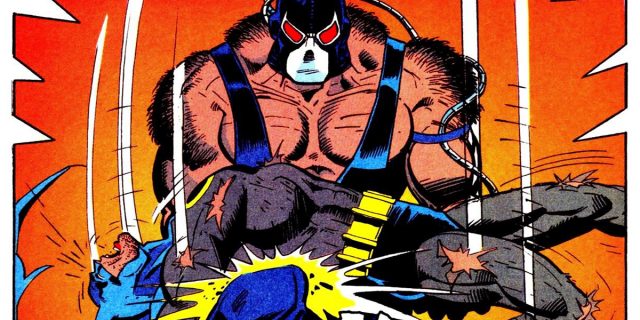
In January 1993, comic book fans saw Superman fight a climactic to-the-death battle with Doomsday in “Superman #75” that resulted in the Man of Steel heroically gave his life to kill and defeat Doomsday. Over the next few months, the DC Universe did not have a Superman around to leap tall buildings in a single bound and fly faster than a speeding bullet. DC also did a special “Funeral for a Friend” story which depicted the entire DC Universe’s reaction to his death and how some of them wanted to mourn him.
It was under this grim, sombre and changed reality that Batman had to operate under. Which thereby resulted in Knightfall. Even if casual comic book readers had not read the story before, I am pretty sure one thing was at least known: Bane breaks Batman’s back (Thank you, “The Dark Knight Rises”). Bane was first introduced in “Vengeance of Bane #1” in January 1993, in an origin story written by Chuck Dixon and artwork by Graham Nolan (no relation to Christopher Nolan). He was later then unleashed onto the Knightfall story as an obsessed man wanting to defeat Batman and who plotted the breakout of all the Who’s Who of Batman’s Rogues Gallery from Arkham Asylum.
Bane’s plan was to weaken Batman significantly from fighting several bouts with the escaped Arkham inmates (which ranged from the Joker, Scarecrow, the Ventriloquist, Riddler, Poison Ivy, Victor Zsasz, Killer Croc, just to name a few) and then in his final bout with Bane in the Batcave itself, Batman would be broken both physically and psychologically.
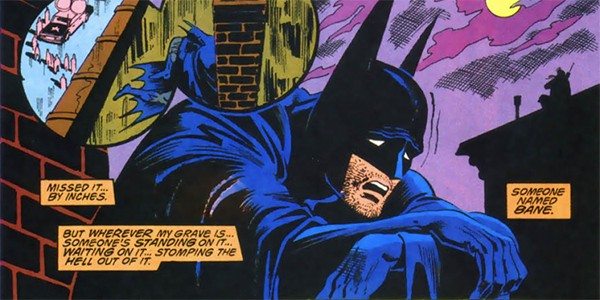
One of the best things from this story is that we are watching a Batman who is losing strength and losing his confidence with each passing issue while Bane had barely even lifted a finger yet. And as if that was not enough to contribute to Batman’s defeat later on, he refused any help from Robin (who was Tim Drake. Welcome to the ‘90s, folks!), Azrael or even from one Dr. Shondra Kinsolving who was obviously smitten by Bruce Wayne.
And so, Bane would subsequently proceed to physically impose himself on Wayne Manor and symbolically broke Batman’s back in the Batcave, supposedly Batman’s safest refuge from the outside world. As if not having Superman around in the DC Universe for the first half of 1993 was heart wrenching enough, imagine what an absent Bruce Wayne Batman had done to all the faint hearts of DC fans.
1993 was certainly a year without our World’s Finest.
Best Quote: “I am Bane and I could kill you. But death would only end your agony and silence your shame. Instead I will simply…BREAK YOU!”- Bane
#7. Batman: A Death in the Family – Written by Jim Starlin, Artwork by Jim Aparo
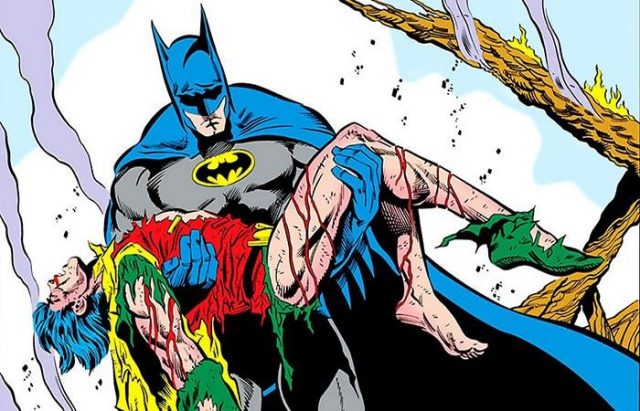
Before A Death in the Family was written in 1988, Frank Miller famously killed Jason Todd first in The Dark Knight Returns. However, because Returns was not considered as part of Batman’s main comics continuity and the fact that the story took place in an alternative future, Jason was not dead in the main Bat-comic continuity. That, of course, changed in A Death in the Family and therefore changing main Bat-comic continuity.
In the four-issue story, a petulant and impulsive Jason Todd broke away from Batman after a petulant and unnecessary argument concerning Jason’s parents, which coming from the typical petulant Jason is not that hard to imagine why an argument with him is unnecessary (see, I’m not biased against Jason). Jason then went his own to hunt for his biological mother before Batman met up with him, later on, to take on Lady Shiva, who was one of the prime suspects as Jason’s mother.
Shiva was not the mother they were looking for and Batman and Robin ended up in Ethiopia, with a Joker who had somehow gotten his hand on a nuclear missile and sold it to a terrorist while Jason had finally found his real biological mother. Long story short, the Joker got hold of Jason and his mother and he mercilessly injures him so severely that Jason had lost almost all of his strength. In his final act of heroism, he shielded his mother from a time bomb set by the Joker and had perished by the time Batman had found him.
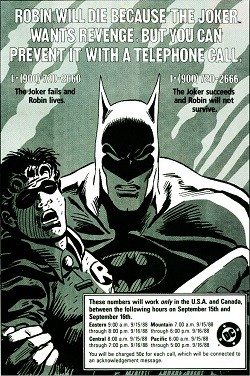
Perhaps the most interesting thing about the book was that Batman fans were given a voice in whether Jason is alive or dead in the book. An advertisement was published at the end of the second book, imploring fans to dial a number to decide Jason’s fate in the next book. A majority voted to kill off Jason and main Bat-comic continuity was changed thus.
The other interesting thing about the story itself was that earlier in the year A Death in the Family was published, Alan Moore’s The Killing Joke had the Joker cripple Barbara Gordon and put her on a wheelchair. The twin
impacts of Barbara’s injury and Jason’s death, all due to the Joker, weigh mightily on Batman for the rest of the decade’s main Bat-comic continuity and proves to show that the Joker simply will not rest when it comes to Batman.
Best Quote: “One look tells the story. There’s no need to check for a pulse. But I do anyway. Nothing. I’ve lost him. He’s already getting cold to the touch. Gone.”- Batman
#8. Batman: Hush – Written by Jeph Loeb, Artwork by Jim Lee
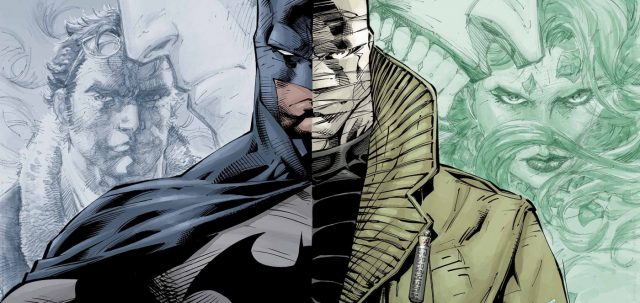
In another one of writer Jeph Loeb’s Batman books (it would be his last Batman book), Hush brought together Mr. Loeb’s uncanny ability of writing a long-issue crime mystery story and Jim Lee’s very skilful and detailed pencilling. In yet another Batman story filled with an array of his Rogues’ Gallery (Joker, Catwoman, Killer Croc, Poison Ivy, Riddler, Harley Quinn, Ra’s al Ghul, Talia al Ghul) and a guest-starring Superman, Batman seeks to find the person who is plotting to bring him down as much as he remains suspicious of one mastermind who is orchestrating a series of events to undermine him.
For the sake of the amazing twist and turns in the story, I will not write about the story any further for fear of spoiling it for readers who may not have read the story before. Because Mr. Loeb is so amazing in creating one mystery to thread all the other plot lines in the story, I found myself yet again excitingly flipping back pages to locate the threads that tie things together. If you thought The Long Halloween (Mr. Loeb’s earlier Batman work) has more twists, I can assure you Hush will top it.
For me personally, even though the book is very much a mystery story, I always regard Hush as a sweet, romantic story between Batman and Catwoman. Not a lot of writers can do enough justice to a Batman-Catwoman love story because some ended up becoming cheesy and cliché. Mr. Loeb, however, has managed to do a lot of justice to this particular love story between the Bat and the Cat by just keeping things basic about them. They are outlaws. They operate outside the law. And they are forever bounded by tragedies. Keep these things basic, throw in some compelling writing and add a dollop of Jim Lee’s pencilling, and you will get what you want in a Bat-Cat love story.
Best Quote: WAY TOO MANY!
#9. Batman: The Court of Owls – Written by Scott Snyder, Artwork by Greg Capullo
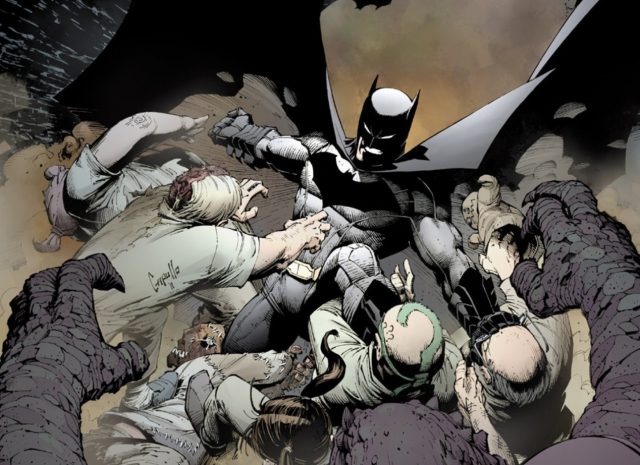
When writer Scott Snyder was announced as the new “Batman” main title writer in the New 52 initiative back in 2011, I was as giddy as a schoolboy because I was following his insanely brilliant run on Detective Comics #871 to #881 (Which was later compiled into ‘Batman: The Black Mirror’) back then. So it was probably a natural choice to have Mr. Snyder take on the main “Batman” title for the New 52. I had supremely high expectations for his run because ‘The Black Mirror’ was just so damn brilliant. And I was definitely not disappointed at all in his nearly 5-year run of “Batman” with the other brilliant Greg Capullo, which I so loyally followed in month after month of single issues.
Anyways, in Mr. Snyder and Mr. Capullo’s first arc for their Batman story, readers will get a history lesson of Gotham City and a history lesson about the Wayne family as well. Now, the kind of history I am talking about is not a boring sort because the history lessons are accompanied by a dose of the supernatural, which is the beauty of The Court of Owls. You get to see this forgotten part of Gotham’s history and also hear about a fictitious nursery rhyme concerning this Court of Owls as well.
From beginning to end, Mr. Snyder has not only used history and the supernatural for this tale, he had also utilized the mystery element to whip this tale into some sort of a supernatural mystery story starring Batman. And it sure doesn’t hurt that Mr. Capullo’s breath-taking artwork greatly enhanced the reading experience. I simply cannot stop admiring the artwork in every page while reading the poetic written words by Mr. Snyder.
Batman is the leading character in this story as he uncovered (along with us readers) the mystery of the Court of Owls and how mistaken and wrong he was in assuming that the Wayne family is the only dominant force in Gotham. We would learn along with Batman how wrong he was in also assuming that Gotham is Batman.
And do not be surprised if you find yourself reading some of the panels upside down in the part where Batman is trapped in the maze. It is deliberately done so and it is done to illustrate the state of confusion Batman is in while trapped in the maze, and us readers are taken along for the ride. Though it is still too premature to declare The Court of Owls a seminal Batman classic, it is however not premature to say that The Court of Owls is probably the best written and best drawn Batman story of the decade (in my humble opinion, of course).
Once you picked up this book, you will not put it down.
Best Quote: WAY TOO FRICKIN’ MANY!
#10. Batman: Noël – Written and Artwork by Lee Bermejo
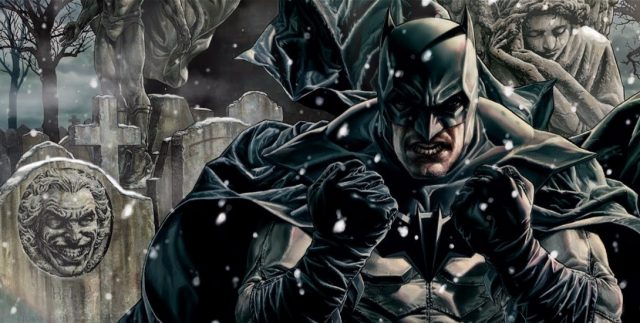
It is hard enough to try to write a comic book. It is doubly hard enough to try to write a Batman comic book. It is insanely hard enough to try to draw a Batman comic book. And it is ludicrously hard enough to try to write and draw a Batman comic book. When we started this list, we started with the legendary Frank Miller writing and drawing The Dark Knight Returns. And therefore, it is quite apt for us to end the list with the brilliant Lee Bermejo also writing and drawing his own Batman story.
Noël is actually a very simple tale of a Batman version of Charles Dickens’s ‘A Christmas Carol’, so if you love both Dickens and Batman, you are definitely in for a treat. Like Mr. Bermejo’s previous work with writer Brian Azzarello in Joker, this story is told in a third-person point of view and also told by a henchman of the Joker. Batman is Scrooge in this story as he is confronted by his versions of the Christmas Past, Christmas Present and Christmas Future.
Noël is also a celebration of Batman history as Mr. Bermejo has so masterfully illustrated throughout the pages of the book. So not only are readers being treated to a creative concept of putting Batman and Charles Dickens together, readers will marvel at the level of care Mr. Bermejo has always put into his very photorealistic artwork of human characters. I do not think I have seen an artist who has made facial expressions even more expressive than it already is.
And thankfully because this book takes place during Christmas, reading Noël and watching Tim Burton’s “Batman Returns” have thus since become my favourite Batman things to do every Christmas! Batman, Christmas and Charles Dickens. Can’t go wrong.
Best Quote: “Work was all that mattered to Scrooge. His anger and loss had consumed him to the point where human contact was nearly impossible.” – Bob
If you are looking to add these classics to your collection, you can get them physically via Amazon or digitally through Comixology, just follow the links in the titles!
Keith likes to brood in the dark in his Batcave (also known as his bedroom) and wages his relentless war on crime during long, long nights filled with icy, cold air. He is also a lifelong and diehard Batman fan since he was old enough to wear a child Bat cowl. When he is not an illegal but supremely good-looking vigilante, Keith reads Batman comics, builds his Batman Legos, plays with his Bat-collection of action figures and dabbles in Star Wars too.

